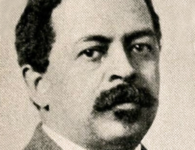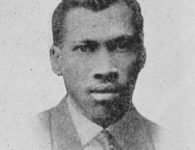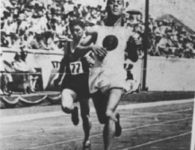Ruby Doris Smith-Robinson worked with the Student Nonviolent Coordinating Committee from its earliest days in 1960 until her death in October 1967. She succeeded James Forman as SNCC’s executive secretary in Atlanta and was the only woman ever to serve in this capacity.
Smith-Robinson was born in Atlanta, Georgia, on April 25, 1942. Her childhood was spent in Atlanta’s Summerhill neighborhood, one of the oldest black communities. She was the second oldest of seven children to J.T. and Alice Smith. Throughout her life, she witnessed the support of black businesses, schools, churches, and social activities from black supporters. She saw how people were willing to come together to better their own neighborhoods.
Although Smith-Robinson lived a sheltered life growing up, the reality of racism and segregation was never too far away from home. One specific encounter she once had with segregation as a young girl was on a summer day when she and a sister went to the drugstore for an ice cream cone. The clerk used his hands to grab her cone and handed it to her. She replied by saying, “I won’t be eating that one” because she knew that they used tissues to grab cones for the white customers.”
She was encouraged to excel in her studies by her mother. At the age of sixteen, she graduated from Price High School and went on to Spelman College.
In the spring of 1960, Robinson attended a mass meeting for college students at Shaw University in Raleigh, North Carolina. At this meeting and under the guidance of the Southern Christian Leadership Conference representative, Ella Baker, the Student Nonviolent Coordinating Committee (SNCC) was founded. Robinson was designated an SNCC field representative and assisted in organizing chapters in Charleston, South Carolina, Nashville, Tennessee, and Macomb, Mississippi.
Robinson along with three other SNCC leaders – Diane Nash, J. Charles Jones, and Charles Sherrod, traveled to Rock Hill, South Carolina in 1961, where they participated in the city’s sit-in movement. In a show of solidarity with local demonstrators, Robinson’s group initiated a “Jail-No-Bail” sit-in tactic. The protests led to a 30-day jail sentence for Robinson and hundreds of other participants. However, this did not deter Robinson from her activism, she went on to participate in the Freedom Rides which led to a 45-day jail term in Parchman Penitentiary in Mississippi. While in prison she was brutalized by the prison guards.
In May 1966, Robinson replaced James Forman as SNCC’s executive secretary, she was the first and only woman to serve in that capacity. Unfortunately, Robinson was diagnosed with terminal cancer in 1967. She died on October 7, 1967, at the young age of twenty-five.
sources:
http://crdl.usg.edu/people/r/robinson_ruby_doris_smith_1941_1967/
https://www.encyclopedia.com/women/encyclopedias-almanacs-transcripts-and-maps/robinson-ruby-doris-smith-1942-1967




















2 Comments
[…] of Black women whose personal sacrifices helped advance the struggle. Among this group of women are Ruby Doris Smith-Robinson (1942-1967) of SNCC whose commitments aided in the development of the vanguard student organization; […]
I am not rattling great with English but I get hold this really easygoing to read .